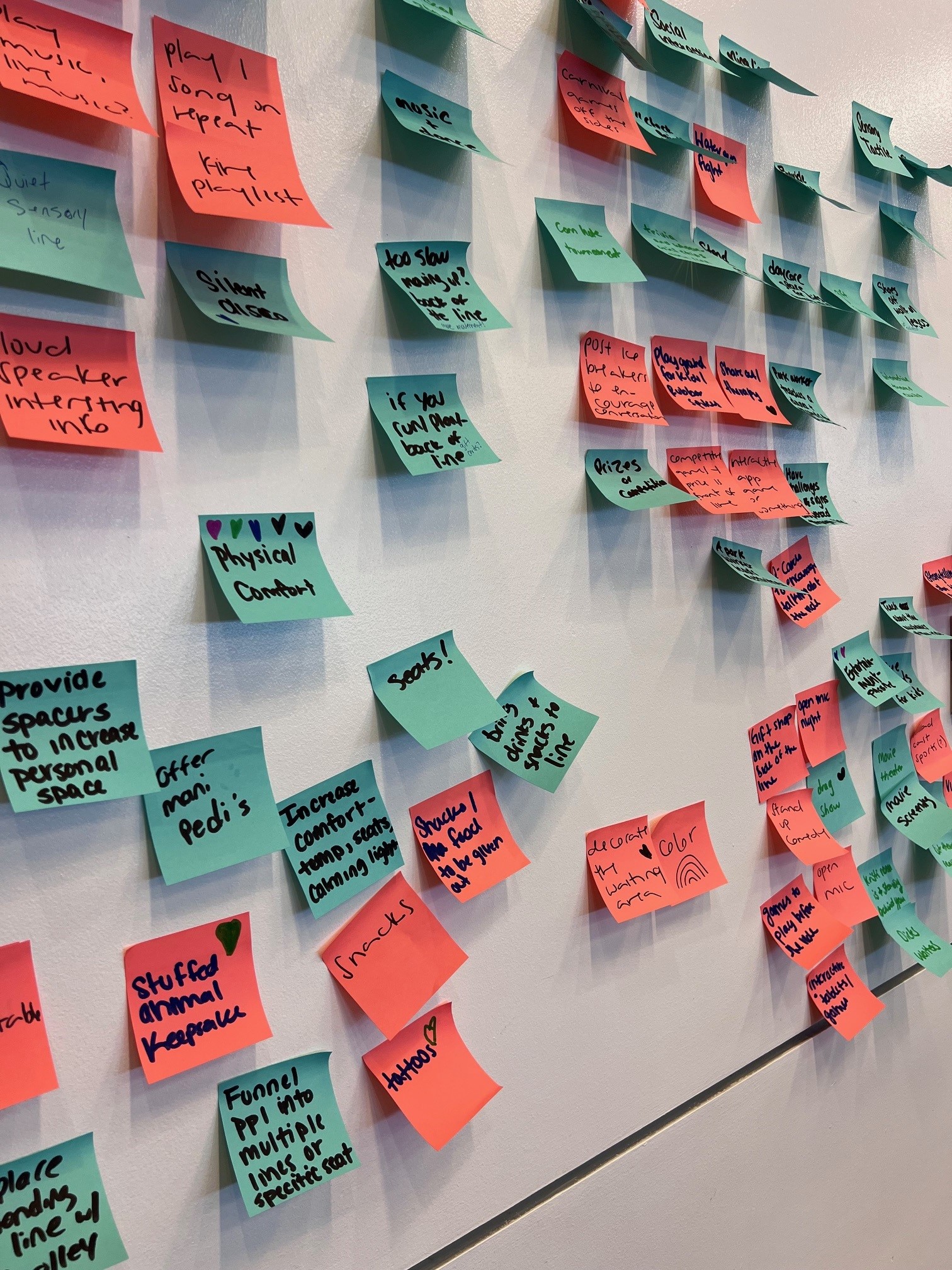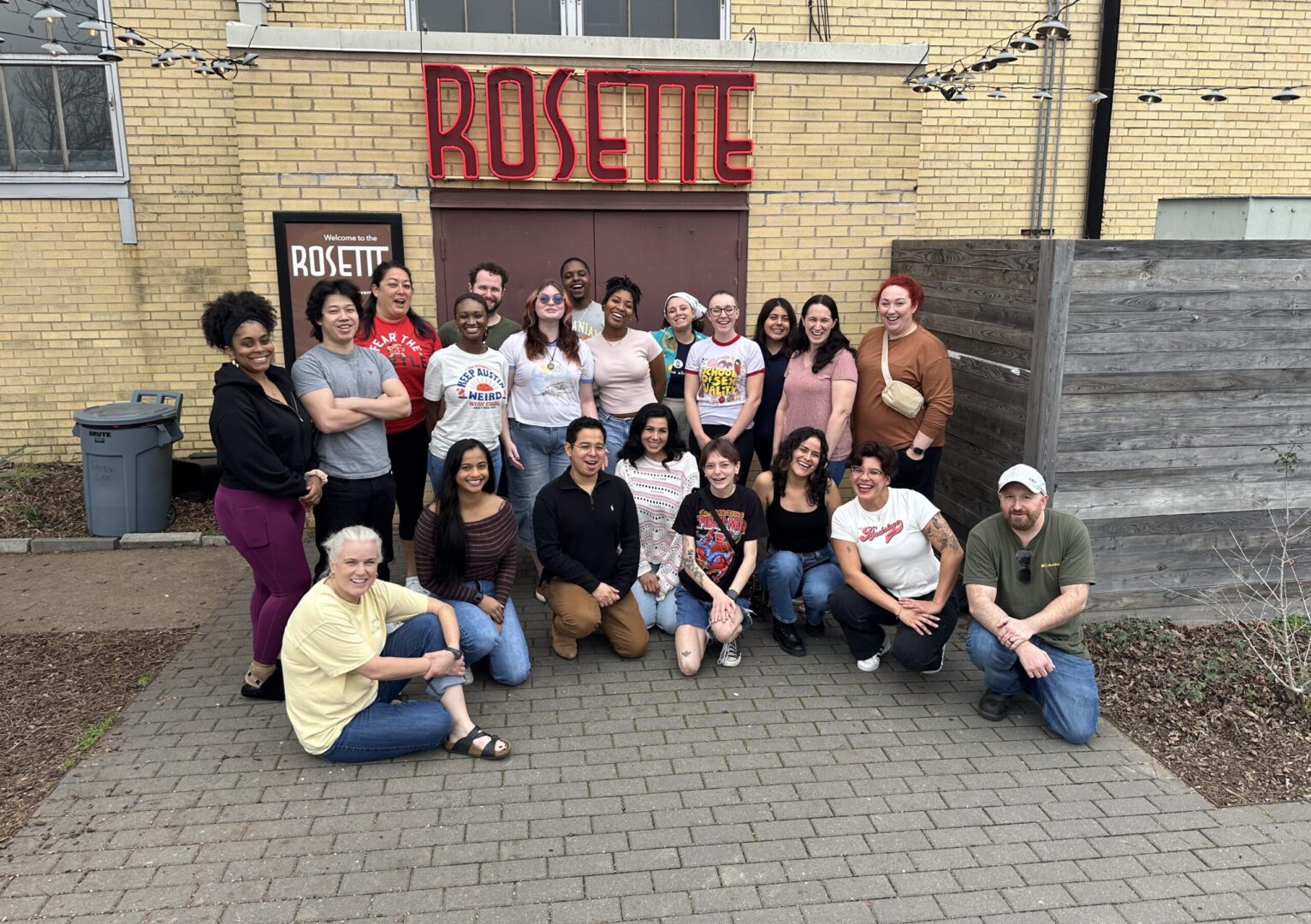I
t’s not always realistic to implement the entire human-centered design (HCD) process in every project. Even if you are well versed in HCD, time, resources, or stakeholder buy-in might limit how far you can go. But that doesn’t mean you can’t still incorporate some of its most powerful tools and mindsets.
Ideation is all about exploring possibilities. It’s where creativity, curiosity, and collaboration shine.
One of the easiest, quickest, and most adaptable pieces of HCD you can integrate into your work is ideation. Ideation is the process of generating lots of ideas, without judgment, in a short period of time. Ideation is all about exploring possibilities. It’s where creativity, curiosity, and collaboration shine.
Ideation also helps you practice essential HCD mindsets, like deferring judgment, embracing ambiguity, thinking expansively, and building on others’ ideas, in a short period of time. A quick ideation session can infuse energy into your team, unlock surprising solutions, and shift how people approach challenges, even if you only have 15 minutes. Ready to give it a shot?
Here are three simple ideation methods our In/Tend teams used at our recent in-person gathering. Try adding one to your next meeting.
Rapid Brainstorming
A classic! Team members quickly generate as many ideas as possible in response to a problem or opportunity prompt. The emphasis is on quantity, speed, and wild thinking. Banish all judgment or worries about if you could do the idea.
Benefits:
- Encourages free-flowing creativity
- Reduces overthinking
- Surfaces unexpected ideas
- Builds team energy and collaboration
- Gives people permission to dream wildly
When to do it:
- When you are starting a project and need ideas
- When you feel stuck or need fresh perspectives
- Anytime you want a quick creativity boost
- As a creative warm-up before a solution-heavy meeting
How to do it:
- Set a clear, focused prompt (e.g., “How might we make our onboarding process more welcoming?”).
- Set a timer (5-10 minutes works well).
- Everyone writes or says as many ideas as possible—no evaluation! Sticky notes with one idea on each works best, but use whatever you have.
- After time’s up, share all ideas. Cluster similar ones and allow team members to build on each other.
Reverse Brainstorming
Instead of brainstorming how to achieve a positive goal, you flip it: Brainstorm how to cause the opposite, like a negative outcome you want to avoid. Then, reverse the “bad” ideas into potential “good” ideas.
Benefits:
- Helps teams break out of habitual thinking
- Highlights overlooked risks or pain points
- Sparks creative problem-solving by flipping perspectives
When to do it:
- When addressing persistent challenges
- When traditional brainstorming hasn’t yielded strong ideas
- To engage teams in thinking differently
How to do it:
- Create a negative prompt (e.g., “How could we make our services as frustrating as possible?”).
- Generate ideas enthusiastically—no holding back!
- Once you’ve collected ideas, flip each one to its opposite (e.g., “long wait times” becomes “fast, streamlined access”).
- Discuss which flipped ideas have real potential.
Mash-Ups
Take two unrelated or previously brainstormed ideas and combine them to see what new concepts emerge. The magic often lies in surprising or unusual pairings.
Benefits:
- Encourages novel connections
- Helps teams break silos by combining different perspectives
- Pushes ideas beyond the obvious
When to do it:
- After a previous brainstorming session
- When you have many partial or incomplete ideas
- To unlock new concepts from existing ones
How to do it:
- List out ideas generated in earlier sessions or from past projects.
- Randomly select two (or more) ideas.
- Challenge the team: “What happens if we combine these?”
- Repeat, remix, and discuss!
Once You Have a Ton of Ideas…
The next step is narrowing them down to the most promising ones. Try these quick decision-making tools:
- Dot Voting: Each team member gets a set number of sticky dots (or digital votes) to place on their favorite ideas. The top-voted ideas move forward for further exploration.
- Top Five Selection: As a team, discuss and agree on the top five ideas based on criteria like feasibility, impact, or excitement. Prioritize ideas that feel doable but still stretch the team’s thinking.
You don’t need a big budget or long timeline to tap into the power of human-centered design. By integrating quick ideation methods like these, you can spark fresh ideas, practice creative mindsets, and bring more innovation to your everyday problem-solving.
Emily, MPH is a Design Coach who is a facilitator and trainer in innovation and research strategies, including design thinking, strategy, and change management. She believes that everyone is an innovator and that when we empower people with the tools and freedom to get creative, we end up with remarkable ideas! Emily loves cliche long walks on the beach and exploring new cities. Read more about Emily.








